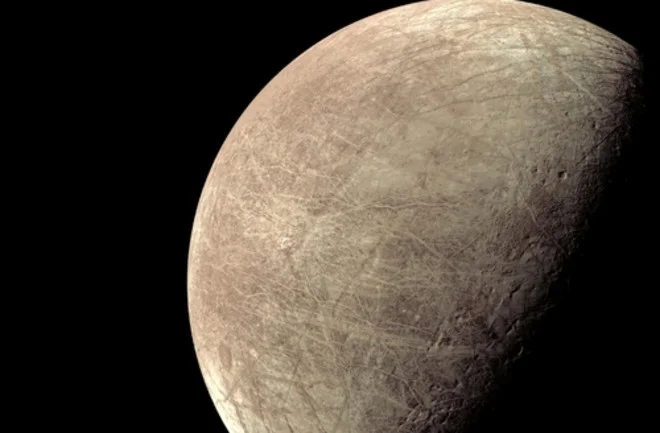
JWST Reveals Europa’s Dynamic Surface: Evidence of a Constantly Changing Icy World, Hinting at Subsurface Ocean Activity
Jupiter's moon Europa, long considered a prime candidate for extraterrestrial life, is revealing its secrets thanks to the James Webb Space Telescope (JWST). Recent observations confirm that Europa's icy surface isn't static but is in a constant state of flux, hinting at a dynamic subsurface ocean and potential geologic activity.
Dr. Ujjwal Raut from the Southwest Research Institute (SWRI) presented findings highlighting the discovery of both amorphous and crystalline ice on Europa's surface. This mix suggests an active water source beneath the icy shell. "Our data showed strong indications that what we are seeing must be sourced from the interior, perhaps from a subsurface ocean nearly 20 miles (30 kilometers) beneath Europa’s thick icy shell," Raut explained.

The key lies in the characteristics of the ice. Crystalline ice, with its organized hexagonal structure, is disrupted by Jupiter's intense radiation, transforming it into amorphous ice. The presence of crystalline ice indicates resurfacing and internal activity. Areas like Tara Regio show higher concentrations of crystalline ice, further supporting this theory.
According to Richard Cartwright of Johns Hopkins Applied Physics Laboratory, Tara Regio is also exhibiting unusual features. "We think that the surface is fairly porous and warm enough in some areas to allow the ice to recrystallize rapidly," he stated. Furthermore, it contains evidence of sodium chloride (table salt), carbon dioxide (CO2), and hydrogen peroxide, possibly originating from Europa's interior ocean. The presence of both common carbon (12CO2) and its heavier isotope (13CO2) further points to an internal origin for these compounds.

The processes driving this resurfacing are thought to include tidal heating and radioactive decay within Europa's core. These heat sources warm up the subsurface ocean, forcing water to rise through diapirs (akin to stovepipes) or through plumes (geysers), depositing crystalline ice onto the surface. However, this freshly formed ice is quickly bombarded by radiation, transitioning back to amorphous ice within as little as 15 days in some areas.
These findings underscore Europa's dynamic nature and strengthen the case for a liquid ocean beneath its icy shell. The upcoming Europa Clipper mission, slated to arrive in 2030, will perform detailed studies of the moon’s surface and search for plumes, potentially offering unprecedented insights into the habitability of this intriguing Jovian moon.
What are the implications of a constantly changing surface for the potential of life on Europa? Does the presence of sodium chloride and other compounds signal a complex and potentially habitable ocean environment? Share your thoughts and predictions in the comments below!